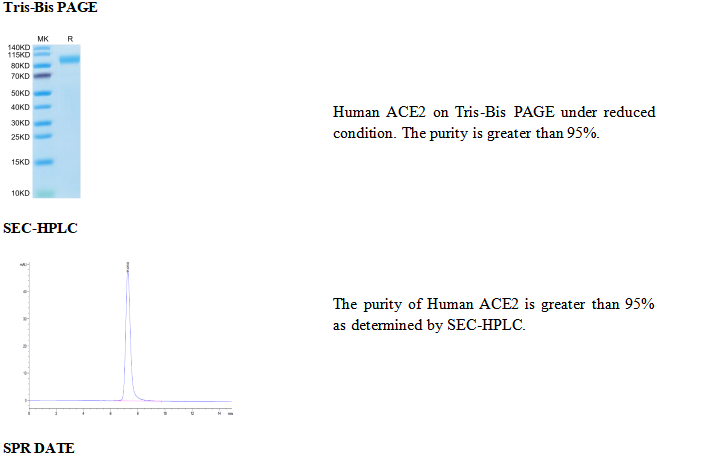Angiotensin I Converting Enzyme (ACE-2), also called ACEH (ACE homologue), is a dimeric, zinc-dependent metalloprotease of the ACE family that also includes somatic and germinal ACE. ACE-2 mRNA is found at high levels in heart, testis, and kidney and at lower levels in a wide variety of tissues. ACE-2 is the SARS-CoV and SARS-CoV2 Spike protein receptor in vivo, functions catalytically as a carboxypeptidase to cleave several substrates including angiotensins I and II, and acts as a partner for B0AT1-family amino acid transporters. Through these functions, ACE-2 has been shown to be involved in several diseases including SARS, COVID19, acute lung injury, heart disease, liver and lung fibrosis, inflammatory lung disease, and cardiopulmonary disease . Full length ACE-2 protein includes an extracellular region composed of a single N-terminal peptidase domain and C-terminal collectrin-like domain (CLD), a transmembrane domain, and a short cytoplasmic tail. The N-terminal peptidase region is required for binding to SARS-CoV and SARS-CoV2 spike proteins, while the CLD contains a region that promotes dimerization and association with amino acid transporters. The peptidase domain contains a long deep cleft that undergoes a large hinge-bending movement at substrate and inhibitor binding. Classical ACE inhibitors such as captopril and lisinopril do not inhibit ACE-2 activity and inhibitors of ACE-2 do not inhibit ACE activity.
高纯度、高活性、低内毒素、高批间一致性
产品数据


-25 ~ -15℃保存,收到货之后有效期1年。 复溶后, 无菌条件下,-85 ~ -65℃保存,3个月有效期。
